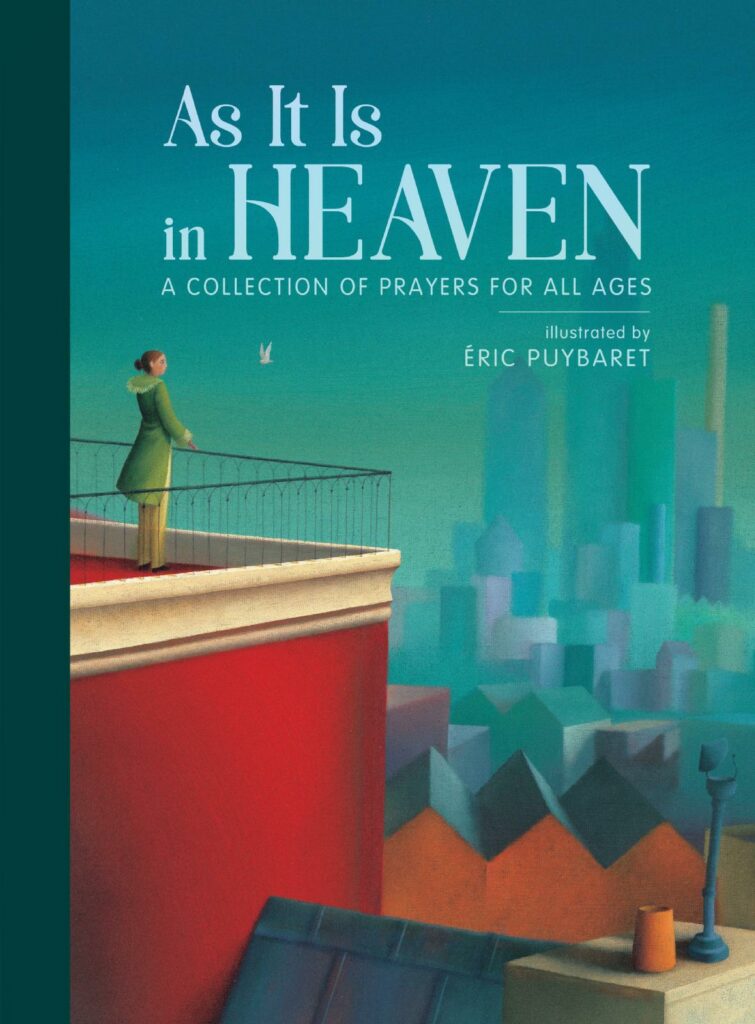“Bless My Grandchild: A Catholic Prayer Book for Grandparents” by Julie Cragon. Ave Maria Press (Notre Dame, Indiana, 2020). 174 pp., $14.95.
“Bless Us, O Lord: A Family Treasury of Mealtime Prayers,” written and compiled by Robert M. Hamma. Ave Maria Press (Notre Dame, Indiana, 2020). 202 pp., $17.95.
“Alleluia to Amen: The Prayer Book for Catholic Parishes,” written and compiled by Justin McClain. Ave Maria Press (Notre Dame, Indiana, 2020). 205 pp., $19.95.
“Oremus: A Treasury of Latin Prayers With English Translations,” translated by Christopher Bailey. Ave Maria Press (Notre Dame, Indiana, 2020). 203 pp., $15.95.
“As It Is in Heaven: A Collection of Prayers for All Ages,” illustrated by Eric Puybaret. Wm. B. Eerdmans Publishing Co. (Grand Rapids, Michigan, 2020) 40 pp., $17.99.
When the COVID-19 pandemic is over, we will see massive changes in family life, child care, education, work, health care, leisure, sports and recreation, and, of course, religion.
It is possible we will look back on this time as one when lay Catholics shifted their focus from the parish to the home, becoming more intentional about personal prayer.
Some recently published books can help people retain their core Catholic identity when opportunities for parish involvement are hampered by the pandemic and the need for social distancing.
“Bless My Grandchild” is a lovely book. The heartfelt prayers written by author Julie Cragon are presented chronologically and cover every imaginable situation a grandparent could pray about — the grief of a miscarriage, birth, adoption, health problems, challenges faced by elementary and middle school students and by teenagers, serious problems such as illness, divorce and death, and support in a grandchild’s vocational choice.
Many of the prayers introduce readers to saints who, because of their patronage or life experience, are powerful intercessors for a particular need. For example, a prayer “to cultivate good television habits” is offered to St. Clare of Assisi, the patron of television.
The wonderful specificity of Cragon’s prayers reveal the confidence of her faith in a God who is attentive to all the needs of his beloved creatures. The book includes traditional devotional prayers and novenas.
Robert Hamma’s “Bless Us, O Lord” is a thoughtful compilation of mealtime prayers that deserves to be kept near a family’s dining area. There are prayers for special occasions — births, birthdays, visits from relatives and friends, baptisms and confirmation, and anniversaries of deaths.
The heart of the book are prayers for the Church year, from the seasons of Advent and Lent to the great feast days. His concise portraits of saints and thoughtful prayers asking for their intercession allow a glimpse of the riches of being part of the Catholic family.
“Alleluia to Amen” offers a guide to writing prayers for specific gatherings in a parish, ranging from feast days, meetings, personnel changes, intercessory prayers for parishioners, issues of social justice, Church seasons and feast days, and prayers for occupations and vocations.
This book is not universally applicable — few people will need to write a “prayer before a budgetary review or audit” — and sometimes petitionary prayers about social ills sound more like explicating issues rather than asking for guidance or repentance.
But the book is helpful because it encourages, and models, how to write prayers. The guidelines offered by the appendix — how to write in fidelity to Catholic teaching, with a focus on God, with simplicity and sincerity — can be useful in many situations. It would not be appropriate to pray publicly in other workplaces, but a person could certainly write, and offer, private prayers along the lines of those offered in this book.
“Oremus” offers Latin translations of traditional devotional prayers, favorite psalms, litanies, Gospel sequences and Marian prayers. English and Latin appear on facing pages and there is a helpful pronunciation guide at the beginning of the book.
The introduction presents several arguments for praying in Latin: it is the language of the Catholic Church; the most loved prayers of the Church were originally written and prayed in Latin; it is a universal language and, “when you pray in Latin, you are making the unity of the Church more visible.”
“Praying in Latin also gives us a way of separating our everyday speech from the words we use to speak to God,” Christopher Bailey writes.
Interestingly, the three other books from Ave Maria Press considered here exemplify the belief that in fact it is good to speak to God in ordinary speech. Are the prayers of a woman longing for her grandchild’s baptism less pleasing to God because spoken in English and not Latin? Arguments like this diminish rather than enhance the universality of the Church.
“As It Is In Heaven” is a lovely gift book; the evocative artwork of French painter Eric Puybaret, inspired by early Italian Renaissance painting, beautifully illustrates the prayers presented. It really is, as the subtitle suggests, “A Collection of Prayers for All Ages.”
The prayers range from the Lord’s Prayer, the Hail Mary and the Apostle’s Creed to the haunting plea of Blessed Charles de Foucauld’s prayer of abandonment. This would be a good gift for someone who wants to pray with images as well as words.
Linner, a spiritual director, freelance writer and reviewer, has a master’s degree in theology from Weston Jesuit School of Theology.

